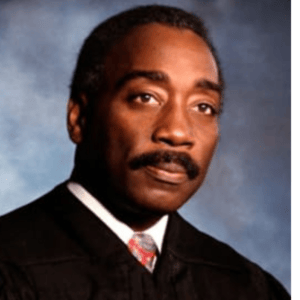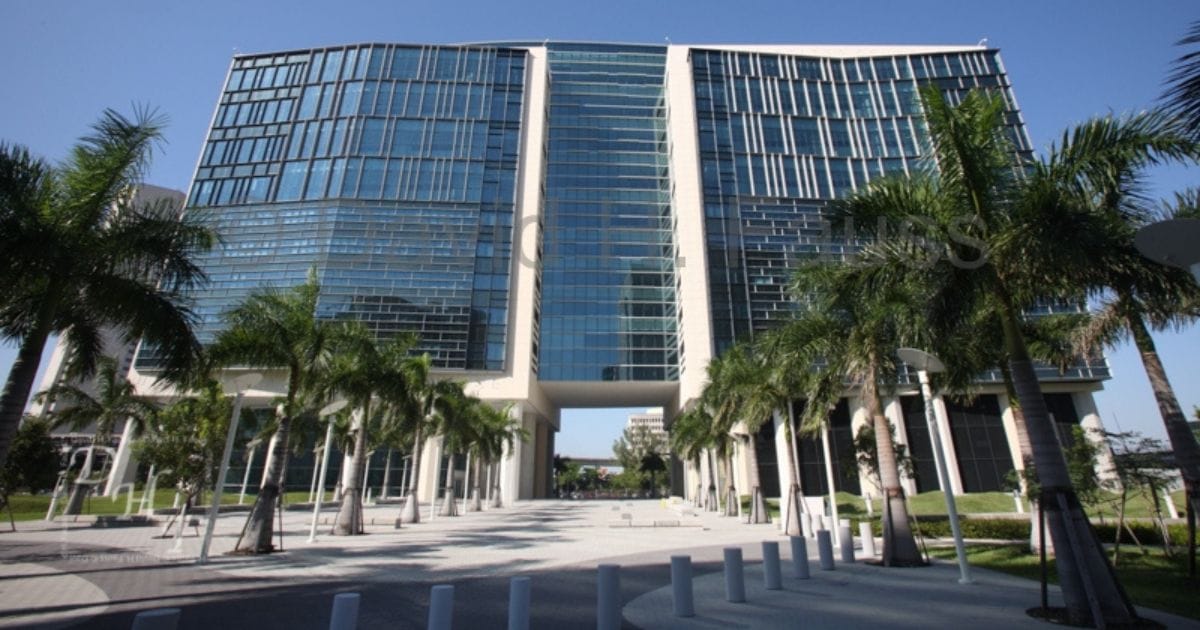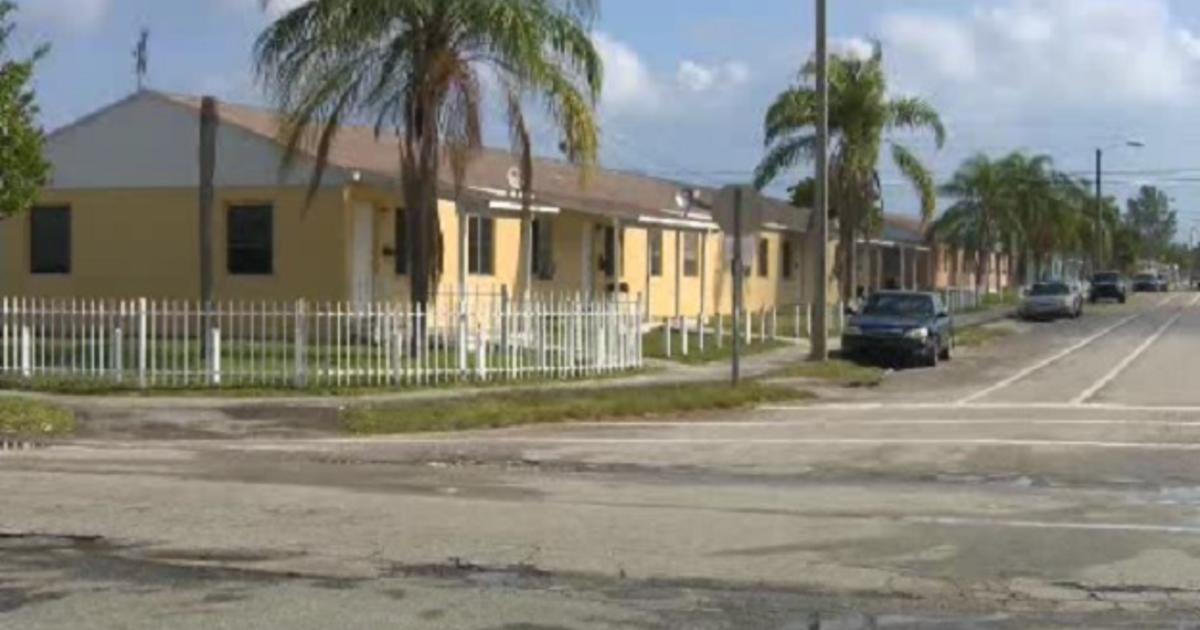Photo caption: Wilkie D. Ferguson U.S. District Court of the Souther District of Florida
On June 9, 2023, the Justice Department announced its historic indictment of President Donald Trump. Few people know that exactly 20 years ago from that date, a prominent Black judge in Miami died before his name would be placed on the federal courthouse where Trump would face criminal charges two decades later.
The Wilkie D. Ferguson U.S. District Court of the Southern District of Florida has a special history. Like the George N. Leighton Criminal Courthouse in Chicago, it’s named after a Black man who rose above racism and carved out a distinguished legal career,
In Miami, the glistening glass skyscraper today of the U.S. District Court in the Southern District of Florida is the center of a historic case against Trump. The courthouse is named after Wilkie D. Ferguson, Jr., a deceased Black judge raised in Miami’s oldest public housing project and educated at inner city schools and HBCU colleges before being appointed to the federal bench.

Judge Ferguson’s life is an inspiring success story. The namesake federal courthouse in Miami is where Trump made history as the first president federally indicted on 37 criminal charges for keeping boxes of classified documents at his Mar-a-Lago mansion after leaving office in 2021.
Amid a media circus outside the courthouse at 400 N. Miami Ave. in Miami’s downtown, Trump appeared in court Tuesday, June 13, for his arraignment before federal Judge Aileen Cannon, whom he appointed in 2019 and was confirmed by a Republican majority U.S. Senate.
Trump has denied all wrongdoing and claims the investigation is politically motivated by Democrats.
Widely accused of being a racist, Trump will ironically be tried in a building named after a Black man, who overcame poverty to rise to the top of the legal profession in a city that has a history of racial tensions between Blacks and Latino Republicans.
Born in 1938, his name was Wilkie D. Ferguson.
He was raised in Miami’s Liberty Square, the city’s oldest and largest public housing project, a massive complex that occupied an entire city block with rows and rows of single-story structures that resembled Army barracks.
The Liberty Square projects was the setting for the critically acclaimed movie, “Moonlight,” which in 2017 won Academy Awards Oscars for Best Picture, and Best Supporting Actor for Mahershala Ali.
Nicknamed the Pork ‘n’ Beans projects, Liberty Square is a sprawling 753-unit complex built in 1937 as Blacks fled the slums in the city’s historically Black Overtown neighborhood next to Miami’s downtown district.
Ferguson was among many prominent Black leaders who grew up in Liberty Square at a time when public housing was a safe, family-oriented environment—viewed as a stepping stone for Blacks working to achieve middle-class lifestyles. The owners of Miami’s historically Black-owned Range Funeral Home were raised in Liberty Square.
In 2015, after years of crime at the complex, political leaders announced plans to demolish Liberty Square and move residents to another public development that has since been built several miles away. In 2019, the city began demolishing the historic complex.
When the Liberty Square housing project was constructed in 1937, white residents in the area had an 8-foot concrete wall built to keep Liberty Square’s Black residents out of their neighborhood. Today, a large portion of “The Wall” remains as a memorial to Miami’s racist past. It sits between Liberty Square and Miami Northwestern High School, which was built in 1955 after white residents moved out.
While being raised in Liberty Square, Ferguson attended Miami Northwestern. The school, built specifically for Miami’s Black population, remains a proud and storied institution that has produced successful Black politicians, NFL players and athletes, scholars and businessmen. Florida Congresswoman Frederica Wilson is a graduate. So was Judge Ferguson.
Ferguson was in Northwestern’s first graduating class in 1956. He received his bachelor’s degree in business administration from Florida A&M College, where he met his wife, Betty, who later became a Miami-Dade County Commissioner and a community leader in Miami Gardens, where a large park is named after her.
After graduating from college, Judge Ferguson enlisted in the Army, attaining the rank of second lieutenant. He served as a paratrooper and infantry officer at Fort Benning, Georgia, in 1961. Following his discharge from active duty, he worked as an accountant in Philadelphia, took graduate courses at Drexel University and then enrolled at Howard University School of Law. He served as associate editor of the Barrister and received his Juris Doctor degree in 1968. Throughout his college and law school years, he continued to serve as an Army Reserve officer and was promoted to captain.
Returning to Miami after law school, Ferguson was appointed to a presidential panel that investigated the 1968 Liberty City riots. His legal career before taking the bench included working at the Liberty City-Brownsville Legal Services office from 1969 to 1971. In 1971, he became one of the co-founders of the law firm McCrary, Ferguson and Lee. His practice included serving for two years as an assistant school board attorney.
In 1973, Judge Ferguson was appointed to the Court of Industrial Claims. In 1976, Ferguson made history becoming the first Black judge appointed to the Dade County Circuit Court. As a trial judge, Ferguson made a landmark ruling precluding the systematic exclusion of Blacks from juries. That ruling led to important appellate decisions recognizing the impropriety of such discrimination in the court system.
Judge Ferguson was appointed to the Third District in December 1980, the first Black judge to serve on the Court. President Bill Clinton nominated him to the federal bench in 1993. While serving as a United States District Court judge, he rendered decisions that led to substantial increases in funding and services for disabled Floridians.
Judge Ferguson’s activities included chairing the Board of Trustees at Florida Memorial College, an HBCU school in Miami Gardens, the largest Black city in the state.
Judge Ferguson’s many awards and honors include the Distinguished Service Award from the South Florida Chapter of the American Society for Public Administration, the United Way of Dade County’s Leadership Award and the Outstanding Jurist Award from the National Bar Association.
In 2000, construction workers demolished a building that once served as a movie theater and the home of WTVJ, an NBC affiliate that was Miami’s first television station. On that site, the federal courthouse housing the Southern District of Florida would be built and named after Judge Ferguson. He died on June 9, 2003, exactly 20 years before the Justice Department announced its charges against Trump.
At its annual meeting on June 19, 2003, the general membership of the Black Lawyers Association voted unanimously to rename itself the Wilkie D. Ferguson, Jr., Bar Association.
A new federal courthouse under construction in downtown Miami has been named in honor of Judge Ferguson.







